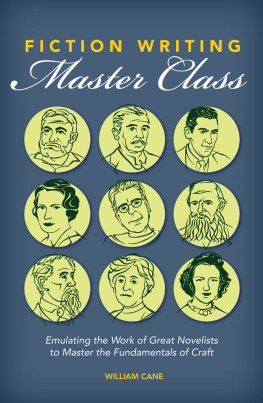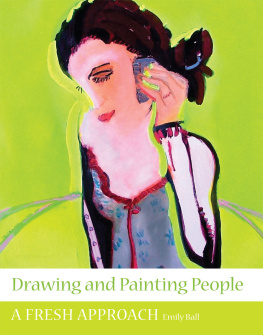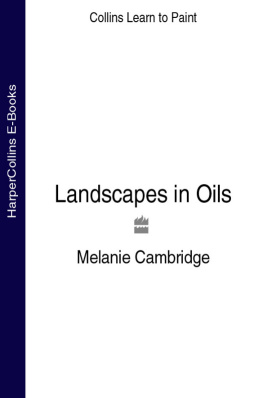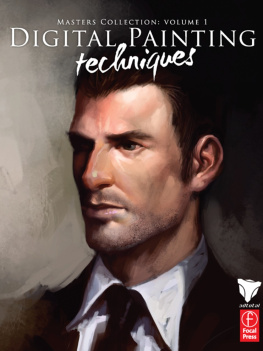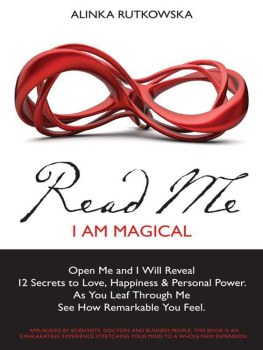William Cane is the author of more than a dozen books, among them such contemporary classics as The Art of Kissing, Fiction Writing Master Class, and Clubhouse Confidential. He has had a distinguished career as a professor of English at CUNY and Boston College, where he helped a generation of students discover the hidden content in works of literature and art. A former Massachusetts trial attorney, he is a highly sought-after speaker on the college lecture circuit. He has appeared on almost every major television talk show, including Today, The View, and CBS This Morning. A native of New York City, he lives in Westchester County.
Anna Gabrielle earned a certificate in world art history from the Smithsonian Associates in Washington, D.C. She also holds a masters in English, with her primary area of research focusing on the hidden symbolism in J. R. R. Tolkiens The Lord of The Rings. A former commercial pilot for a major airline, she has studied paintings in museums on six continents. She lives in New York City.
I F THE WORLD of publishing is like a battlefieldand we assure you that it can often appear that waythen our literary agent Steve Harris is like a commanding general, who, perceiving the conditions of the troops on both sides of the fray, determined to attack by leading his horse with the courage of Achilles straight to the best and truest publisher he could find. No distinct accounts have ever been transmitted concerning this literary giant, even as he waded into the bookselling mle, standing proud and free as if astride his tiny Mongolian ponies, never raising the white flag of surrender, but calling out to his minions, Fear not, you wayward sons and daughters! I swear by the grave of Gutenberg himself that I will find a publisher for this vital treatise on art.
How, Steve? we asked him repeatedly. Howand whycan you give us such assurances?
To this he merely scoffed at us, turned his back on his hired driver, and commanded the man to speed him home from Manhattan, through the Holland Tunnel, to his book-filled office in New Jersey. How many times did he have lunch with noted editors! How often did he rise from the stale cigars and crammed ashtrays on the tables at the Algonquin Hotelnot to mention the various alehouses and gin mills where desperate poets, delusional journalists, and troubled essayists pressed him to converse with them for hourshow often did he rise from those depths of lettered desolation, as if possessed by a physical and mental ability far beyond those of mortal man! Yea, how often did he fling aside the pleading men of letters, the professors with their abysmal book proposals, the starving housewives with the scribbled stories of their futile lives! How often did he turn from these pleading, piteous, beseeching hands with words such as, Leave go of my coattails, you nattering novitiates of a new illiteracy! I have work to do for two writers who deserve my utmost attention, because their book rips asunder the cherished blue skies of complacency in the art world, exposing the inside story behind the greatest paintings and sculptures the world has ever known.
From the account we have now given your Lordship of the tireless travail of Steve Harris, our literary agent, it is unnecessary to dwell upon the conduct of this valiant and undaunted champion of this manuscript. If in its pages you find anything of value, it is to him that thanks and applause are due. At the same time, we are saddled with the painful task to perform of reporting the heavy loss with which our success in publishing this treatise is attended, for the work of our agent is completed, and no longer can we expect to carouse with him in those dens of iniquity where we discussed marketing strategy and book distribution. Until next time, Steve! Until we meet again! Until we do another book together; although, in truth, we strongly suspect that there will never be anything like this manuscript on his desk againnot for years and years, anyway!
Justice also calls upon us to express our highest approbation and acknowledgments for the energy and promptitude of every officer at the publishing house of Rowman & Littlefield in conveying our orders to their compositors, proofreaders, administrators, editors, and accountants, at the same time we beg to mention to our Dear Readers the sense we are impressed with of the abilities and zeal of our acquiring editor, Charles Harmon, from whom, ever since the submission of our proposal for this manuscript from our literary agent, we have continued invariably to experience the most essential services, delivered in the most cordial and professional manner imaginable.
To Professor David Ekserdjian, the world-renowned authority on Italian Renaissance paintings and drawings, who commanded the respect of everyone connected with this unconventional project, we beg to express our sincerest thanks and acknowledgments for the gallantry and conduct he displayed in leading us with unparalleled good humor and helpfulness, under the tremendous fire to which all commentators in this field are exposed; nor can we sufficiently mark the sense we entertain of the zeal and intrepidity he afforded us in reviewing our chapter on Raphael, answering every inquiry with the uncommon grace of one who smiles down upon the brash and bumbling neophytes who have the temerity to attempt to venture into a theater of operations where he alone reigns supreme.
Experts in the realm of art criticism are too well aware of the high professional character and abilities of the following authorities and specialists to render it necessary for us to dwell upon them; we shall therefore merely express our admiration of the style of distinguished conduct and gallantry they severally displayed with which the assault on obliviousness was organized and led by Henry Adams regarding Eakins, Erica Hirshler regarding Sargent, Vern G. Swanson regarding Godward, Peter Trippi regarding Waterhouse, William E. Wallace regarding Michelangelo, Jason Rosenfeld regarding Millais, Zahira Bomford regarding Velzquez, and Fred Ross regarding everything under the sun; and our warmest thanks for the great and essential aid we have derived from their counsels, as well previous to, as during the action of compiling this monograph.
We have deeply to lament our inability to place you, Dear Reader, as if magically transported into the past to stand before the works of art weve discussed as they were first exhibited; indeed, as they were being created by the artists in each case; however, we have exerted every effort to re-create conversations of the artists based on all the available evidence about what they said and how they spoke, and we have exerted every effort to reproduce the artwork for you in this volume, and it is by virtue of the skill and craftsmanship of our publishers team of artisans that we were able to do that. In this connection, we gladly seize the opportunity to bring to your notice the fine work of Naomi Minkoff and Erinn Slanina, whose colleagues are too well aware of their high professional character and abilities to render it necessary for us to dwell upon them; we shall therefore merely express our admiration of the style of distinguished arrangement with which their stamp upon this volume is conferred, and our warmest thanks for the great and essential aid we have derived from their counsels throughout the entire production process that resulted in the book finally being in your hands.
We gladly seize this opportunity to bring to your Lordships notice the great and essential services we have courteously received from our publishers typographer; and from Gerry Leonidas, world renowned professor of typography, whose answers to our queries sprang from his peerless knowledge of the development of printed and hand-illuminated manuscripts throughout the ages, putting us to shame for not being able to reanimate ancient monks and medieval artists to avail ourselves of the exquisite workmanship that constantly inspired us and beckoned us onward in the pathway that produced this volume. And last but certainly not least, we cannot omit to acquaint your Lordship and your Lordships Lady of the indispensible help we received from the capable hands of your counselors, advisors, and associates, many of whom traveled by horse to our headquarters at great peril to themselves to render aid and assistance at a time of pressing need.



